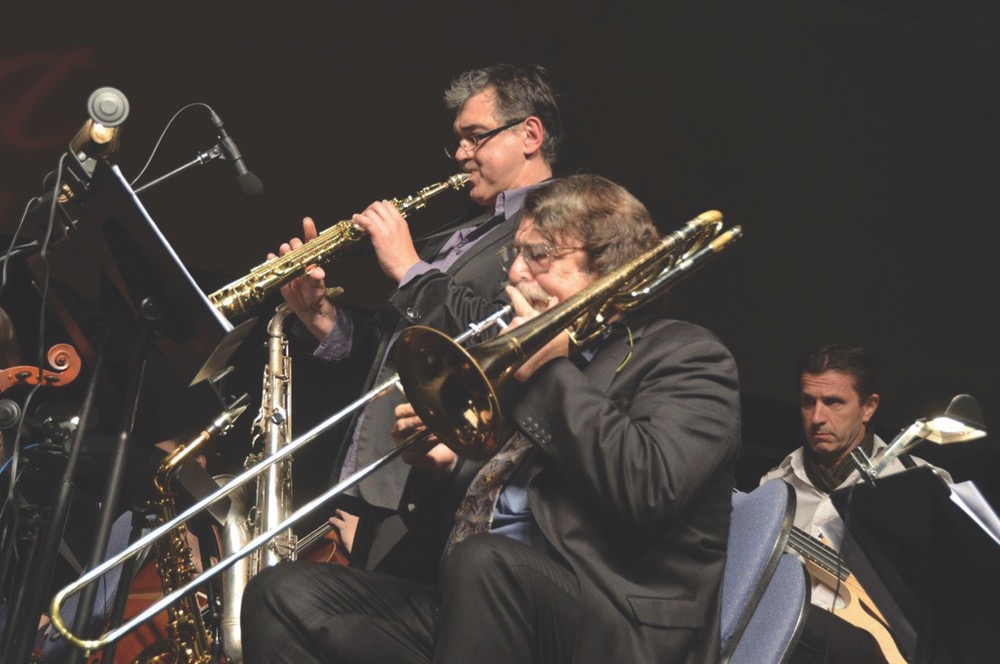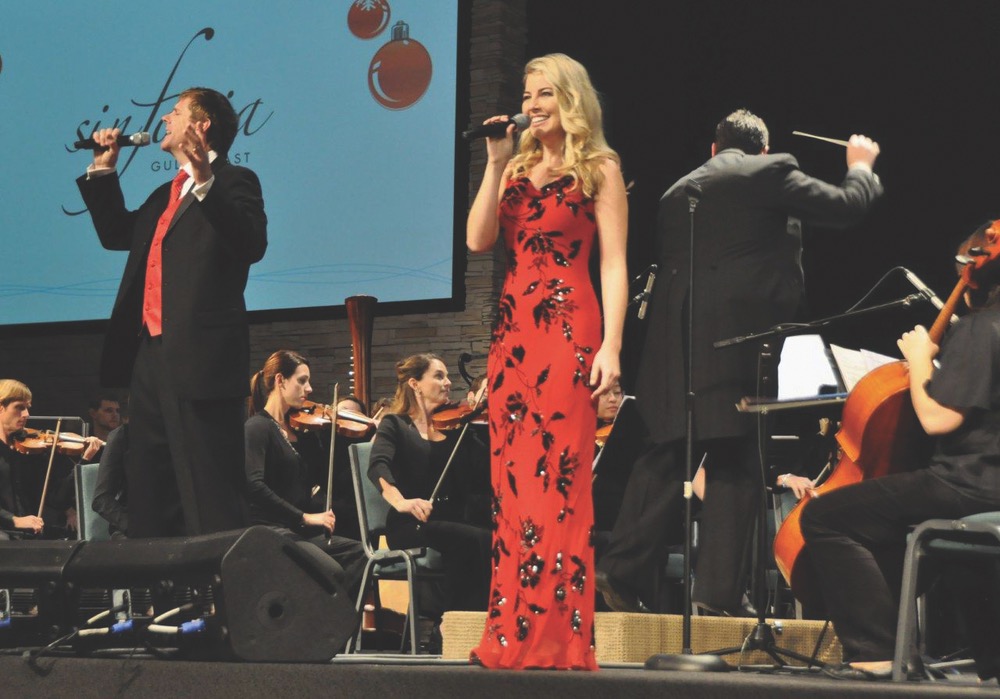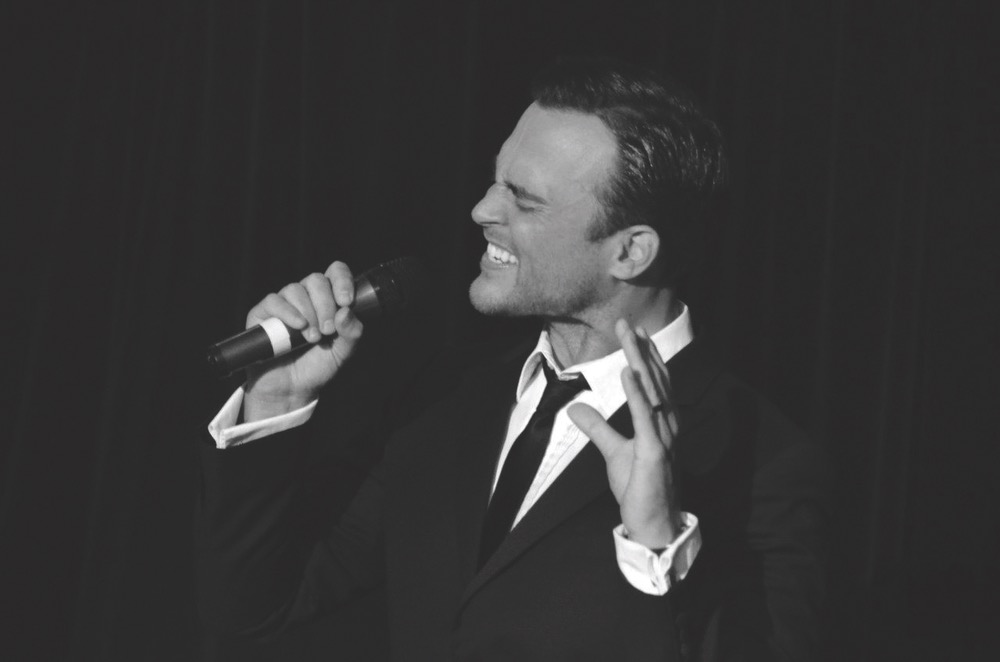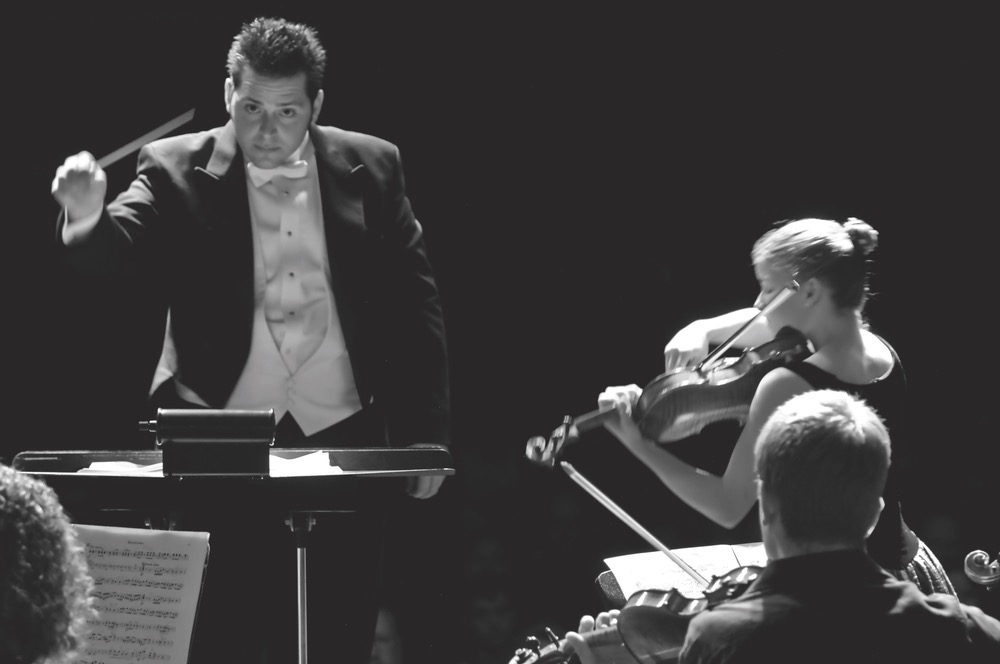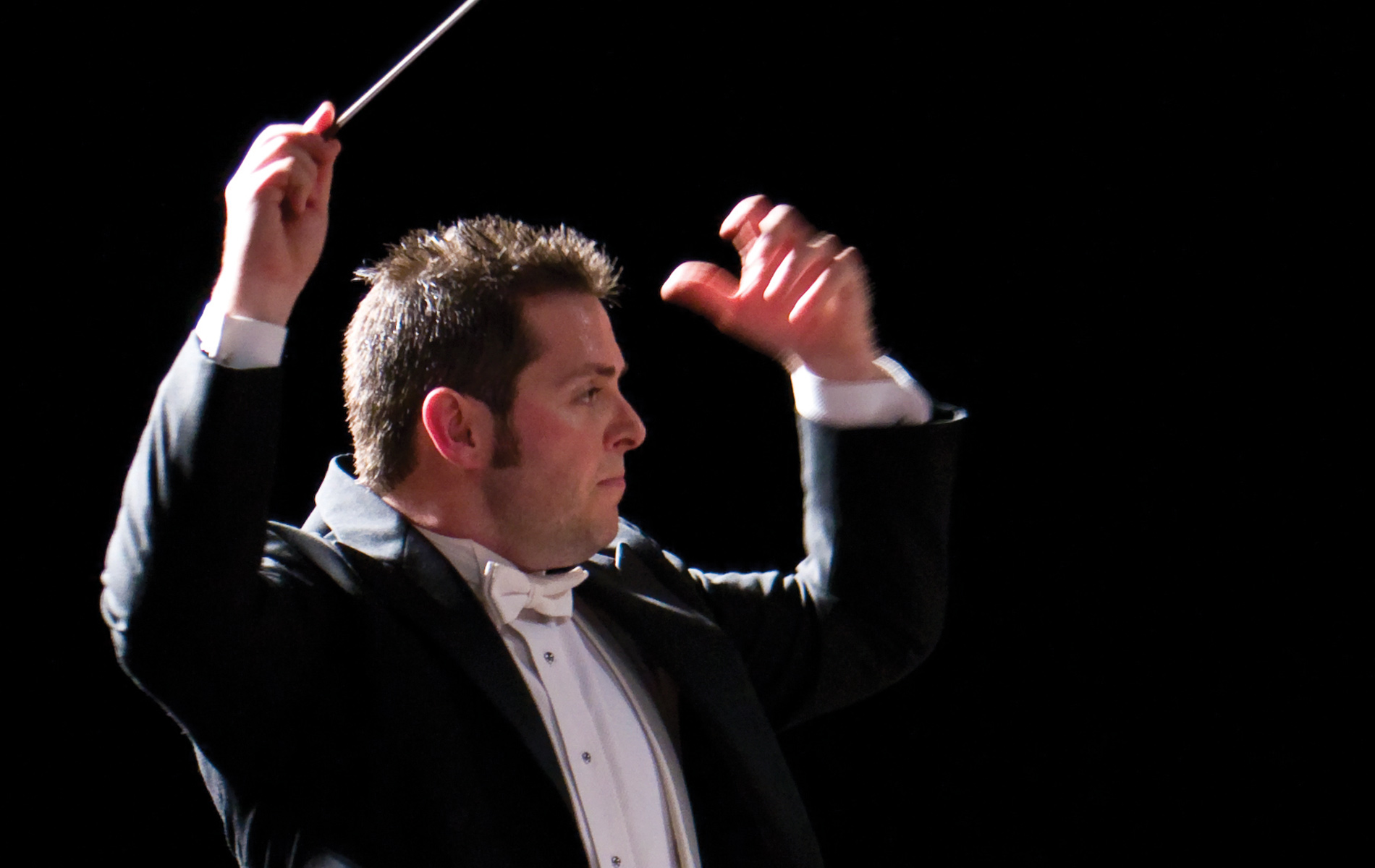
vie-magazine-ten-year-anniversary
Ten Years of Symphony Redefined
Amping the Cultural Quotient
By Tori Phelps | Photography courtesy of Sinfonia Gulf Coast
The traditional ten-year anniversary gift is tin. But Sinfonia is all good on pie plates and Altoids boxes, thanks. Instead, they’ve decided to give fans a gift: a season of old favorites, new surprises—and Kristin Chenoweth.
Changing the Cultural Landscape
Sinfonia exists because of Demetrius Fuller. At age twenty-five, when many of his peers were still figuring out what they wanted to be when they grew up, he decided to reinvent how the entire Northwest Florida coast experiences music. By that time, Fuller was a professional conductor who had lived and worked throughout the United States and Europe. After a stint with the Northwest Florida Symphony, he resolved to act on his conviction that the area needed something different.
Others agreed. The original group behind Sinfonia’s creation shared Fuller’s vision of a truly stand-alone orchestra that served the community as its mission—one that could make a difference from both a cultural and an educational standpoint.
The mantra of Sinfonia became “symphony redefined,” and that’s exactly what it’s done. “Many people think classical music is inaccessible,” Fuller explains. “We’re taking away the notion that the arts are only for a certain demographic by incorporating fun events, great music, and amazing guest artists.”
Symphony audiences are traditionally empty nesters with disposable incomes. And those folks are certainly welcome at Sinfonia performances, Fuller stresses. But Sinfonia is also about reaching a community that may not be familiar with classical music. Families, kids, young professionals—everyone is the target audience.
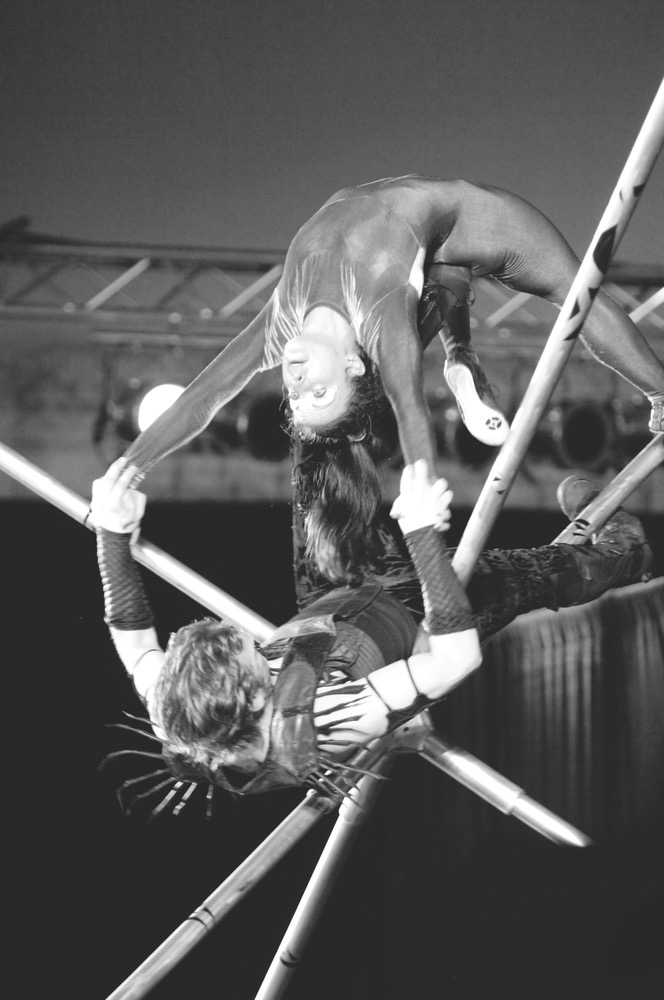
Ten years in, that original mission hasn’t changed. If anything, the focus on education and greater accessibility has only expanded. Sinfonia’s community partnerships, including a variety of programs that are serving seventy thousand children, are setting the standard in this region and beyond. Two years ago, for example, Sinfonia added a sixty-member youth orchestra. It’s an amazing opportunity for the kids, of course, but it’s also a chance for Fuller and the Sinfonia musicians to nurture the next generation of performers. Then there’s Paint the Music, a collaboration with the Mattie Kelly Arts Foundation for local kids in third through eighth grades. This interactive program encourages students to listen to samples of classical music—last year it was Stravinsky’s The Firebird—and then literally paint it. “It’s fun to see how all those young minds interpret what they hear,” Fuller says.
Sinfonia also has a high-profile collaboration with Carnegie Hall, which provides a nine-month music program for grade-school students. The kids learn a music set, usually on a recorder, and then play with Sinfonia during a spring concert. A record three thousand kids signed up this year, making it one of the biggest components of Sinfonia’s education programs. The massive number is a good news/bad news situation for Fuller, who recognizes its popularity for what it is: a sign that, for many kids, this is the only arts program they experience all year.
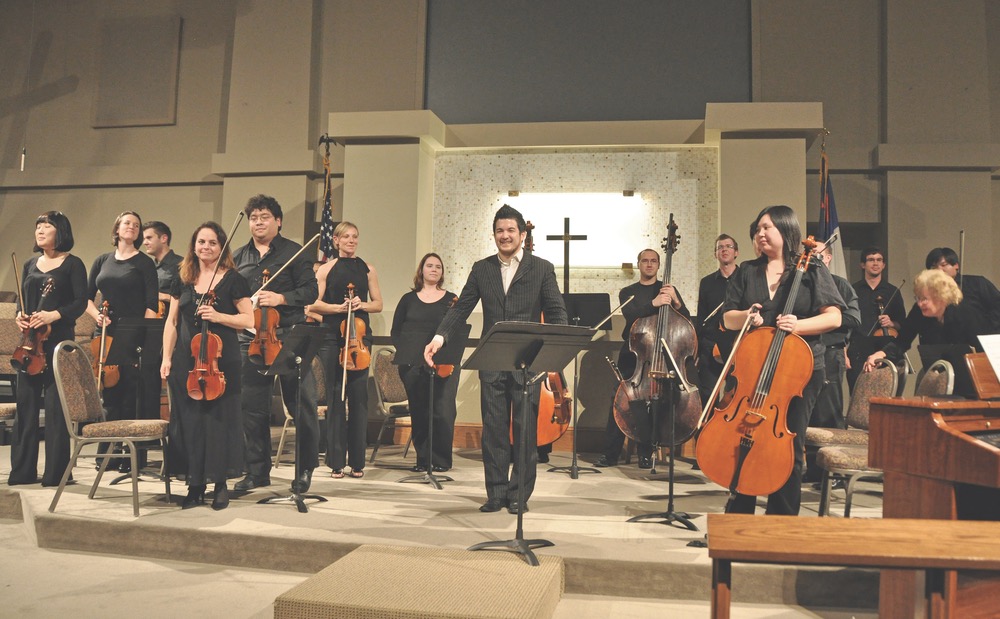
The disheartening number of children who aren’t exposed to the arts is why the Sinfonia staff works so hard to provide that contact. Fuller even ropes guest artists into visiting local schools while they’re in town. Some aren’t especially receptive to the idea, but others go above and beyond, like superstar musician and composer Chris Brubeck, for instance. “He’s been to the schools every time he’s been here, even hosting a jam session with students last time,” Fuller raves. “It’s mind boggling. I sure don’t remember Grammy-winning artists performing for us when I was in school.”
Meeting kids where they are is important. But it’s also important to bring them into the world of Sinfonia for performances. Luckily, Sinfonia donors and sponsors subscribe to the same idea, making it a priority to distribute tickets to families who might not be in a financial position to buy their own.
“Fun” is a word that comes up a lot with Fuller. That approach has won over a lot of people who were hesitant about the idea of classical music.
These programs—and a long list of others—are a big part of what makes Sinfonia tick. In the “symphony redefined” environment, action has replaced lip service when it comes to serving youth and attracting a diverse audience. As a result, Sinfonia has thrived over the past decade while other cultural organizations around the country have not.
Then again, they don’t have Fuller on the podium.

His desire, as long as he can remember, was to do exactly what he’s doing today. From the time he was a preschooler conducting The Muppet Show in his parents’ living room, the Fort Walton Beach native never wavered from his goal. “Those who know me know I want to be in charge all the time,” he admits with a chuckle.
With Fuller at the helm, Sinfonia has attracted a who’s who of guest artists, starting with an inaugural concert featuring Bernadette Peters. Other notable names over the decade include Mary Wilson of the Supremes, Broadway legend Patti LuPone, and R & B icon Roberta Flack. From a classical angle, Fuller points to Caroline Goulding, who Sinfonia audiences met when she was fourteen years old and who’s now a Grammy-nominated violinist.
Though he protests that he couldn’t possibly pick a favorite guest artist, Fuller concedes that Flack’s 2008 performance would be tough to beat. “She was amazing to work with—a true musician,” he says. “The orchestra loved her; the audience loved her. It was the most meaningful moment of my career from a musical standpoint.”
The Best Is Yet to Come
The biggest name, however, has been reserved for Sinfonia’s tenth anniversary this year. Broadway and television star Kristin Chenoweth takes the stage with Sinfonia at its November 13 gala at the Emerald Coast Convention Center. In addition to Chenoweth, the gala will offer a bit of a retrospective of Sinfonia’s first decade.
The concert’s old-and-new theme extends to the rest of the 2015–2016 season. Fuller paid particularly close attention to what audiences wanted. After all, it’s because of faithful supporters that there’s an anniversary season to plan. Fuller ended up programming a blend of back-by-popular-demand performers (like Epic recording artist Morgan James) and fresh experiences for the Emerald Coast.
Whether it’s an anniversary gala or a regular season performance, Fuller’s approach is the same: he’s there to have a good time. People frequently ask whether he gets nervous ahead of concerts, but he insists he doesn’t. Rather, it’s a time for him to enjoy the payoff of what Sinfonia has been working toward. It also helps, of course, that he knows the orchestra’s musicians are the best in the region—better, he believes, than what can be found in many major metropolitan areas. So there’s no need to be nervous. “It’s just fun,” he insists of their performances.
“Fun” is a word that comes up a lot with Fuller; it’s no coincidence that the orchestra has nicknamed itself “Funfonia.” That approach has won over a lot of people who were hesitant about the idea of classical music. Purists might grumble a bit over some of the nontraditional content, but they still attend.
Fuller refuses to apologize for their repertoire. Sinfonia can—and does—play the classics. But it’s also the place where audiences meet new favorites. “We’re known for taking the classics and weaving them into something you haven’t heard before,” he explains.
It’s a formula that has clicked for residents and visitors. Today, the fully professional organization contracts between sixty and eighty musicians each season and boasts the highest-paid orchestra in the region. Another sure sign of its success is the level of staffing, which in the last ten years has gone from one—Fuller—to eight. What hasn’t changed is the quality of the board. It’s always been an active, working board, Fuller says, with every member willing to get down in the trenches.
That kind of involvement is necessary if Sinfonia is going to continue to maintain its high standards. Patrons often ask Fuller, “How are you going to top that season?” Trying to outdo what Sinfonia has already accomplished is probably the most difficult part of his job, he admits. He’s learned, though, that going outside of what he knows Sinfonia should be for the sake of “different” always backfires. The key is finding inspiration within what they do best: creating great educational opportunities for the community, presenting exceptional guest artists, and showcasing a phenomenal orchestra.
The good news is that he’s in no danger of running out of ideas for the future. Fuller can rattle off a dozen with no problem—additional focus on the youth orchestra, commissioning new work, starting a music school, and engaging more newcomer artists are just a small sample.
Thankfully, nowhere on Fuller’s personal list is “leave Sinfonia for bigger and better things.” He lived outside of the Emerald Coast for eleven years and still spends quite a bit of time on the road for work. It’s the best of both worlds, he believes: a home base that’s truly home and the opportunity to gain new perspectives through traveling. “No matter what the future holds, I know Sinfonia will always be part of my life,” he says.
And Sinfonia will always be part of the Gulf Coast, at least if Fuller has a say. Though he shakes his head at the sheer audacity of launching an orchestra like Sinfonia when he was in his midtwenties, he’s thrilled that his audacity paid off. Most of all, he’s grateful for the unwavering support Sinfonia has received from the beginning and for a foundation that’s strong enough to carry them through anything. “We’re ready for the next ten years and beyond,” he promises.
— V —
Share This Story!
KEEP UP WITH THE LATEST STORIES FROM VIE



